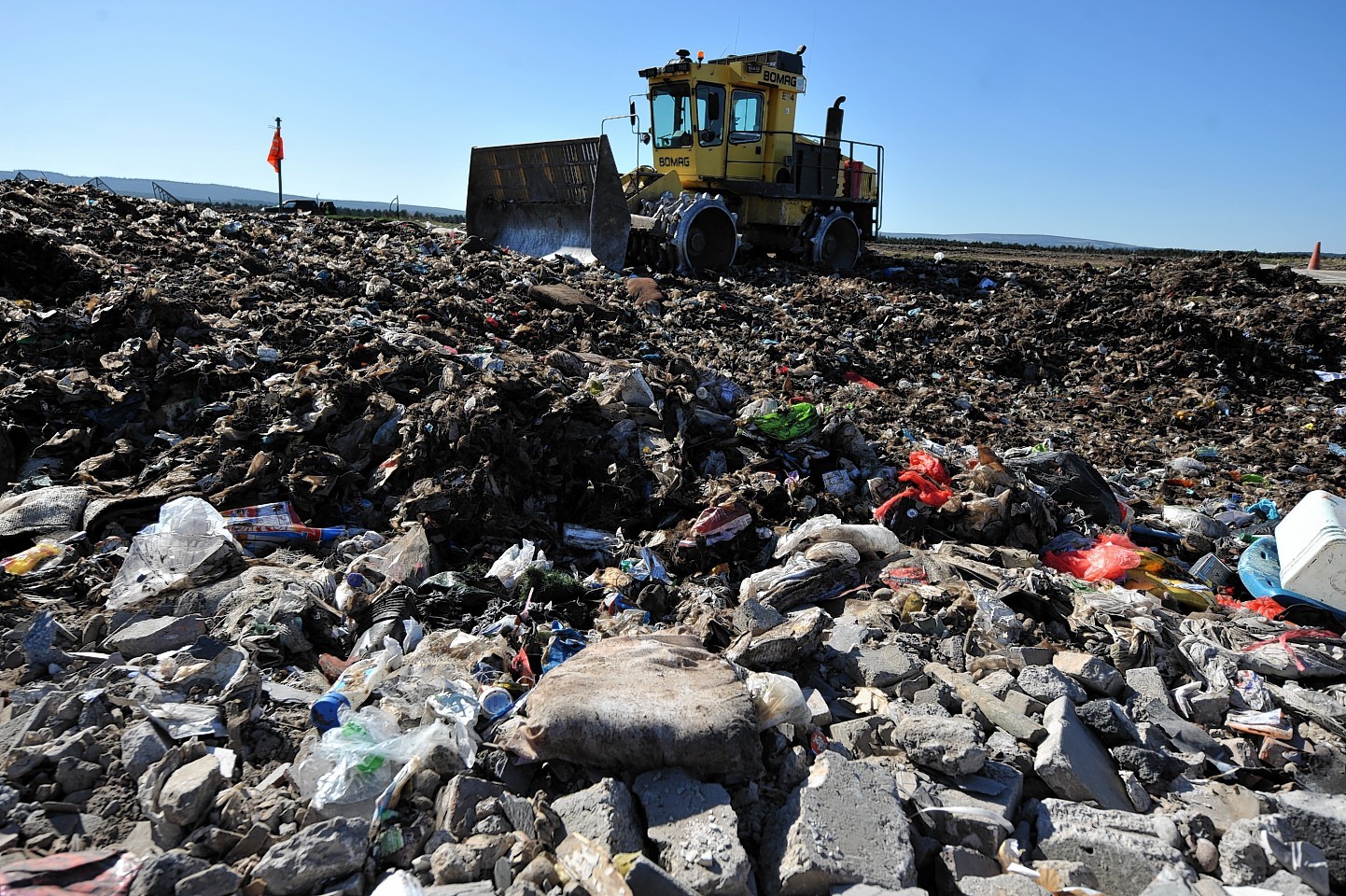Empty bottles recycled by Aberdeen residents could end up as sand in golf course bunkers, while tin cans may be used for aeroplane parts, waste chiefs have revealed.
Officials at the city council disclosed details of where our rubbish ends up after a week in which the local authority moved to reduce the size of wheelie bins.
The buckets are shrinking at the same time as larger containers are being provided for recyclables to extra materials that don’t need to be thrown away.
Most general waste still goes to landfill at the SITA-operated Stoneyhill site in Peterhead.
All paper and cardboard goes to north Wales, location of the largest “re-processor”, which collects one third of the total from households all over the UK.
Plastic bottles most often go to Lincolnshire, where there is one of the most technically advanced plants in Europe and the biggest plastic bottle sorting plant in the country.
Colour-separated glass, meanwhile, goes to central Scotland while garden and food waste is processed locally by New Deer-based Keenan Recycling.
But it is the end result of all that recycling that provides the most interesting facts.
Plastic bottles can be made into fleeces or can be recycled to make carpet material or the filler for sleeping bags.
Finely crushed glass has proved itself to be an “excellent alternative” to traditional sand on golf courses, according to research carried out by the Sports Turf Research Institute (STRI) and WRAP (the Waste and Resources Action Programme).
And all UK newspapers are made using recycled paper.
A spokesman for the council said: “Processing recyclables back into high-quality, useful products requires large quantities of materials to make it economically viable.
“At present, Scotland produces relatively small amounts of recycling hence the need to send our recyclables elsewhere for reprocessing.
“One advantage of expanding our recycling collections and developing new facilities here in Aberdeen is we can bring certain stages of the process closer to home while generating more business and employment opportunities for the city.”
The city council has committed £28million towards the development of new infrastructure and recycling facilities to reduce the amount of money spent on sending waste to landfill sites.
All Scottish councils are working to meet government targets to reduce the amount of waste going to landfill.
By 2025, the aim is that 70% will be recycled or composted. In 2012, Aberdeen managed 37.3%.
Officials have warned that further “significant” investment will be required to develop an Energy from Waste (EfW) facility in the city capable of generating heat and power from non-recycled waste.
In October last year, recycling bosses seeking a site for the multimillion-pound EfW said they would have to widen the net after failing to secure a location.
A shortlist of three areas that could house new facilities, including Dyce, Bridge of Don and Portlethen, had been drawn up.
The preferred option is to combine several facilities, including the EFW complex, at one 10-acre site.
But negotiations with developers to buy up land have so far failed to identify somewhere suitable that is capable of housing all of the plants together.
